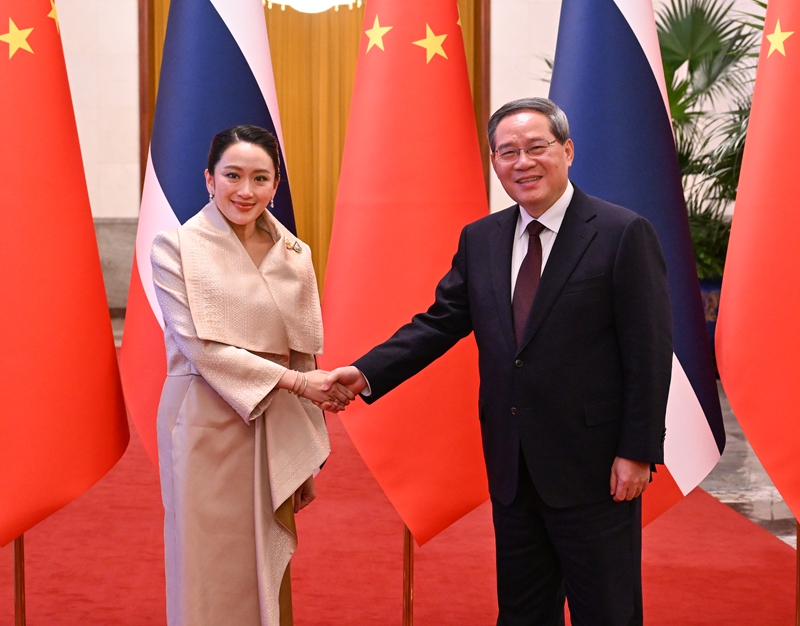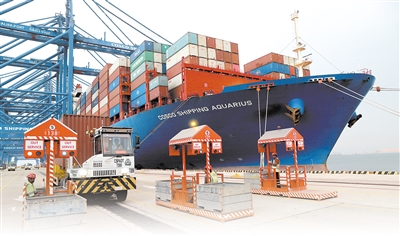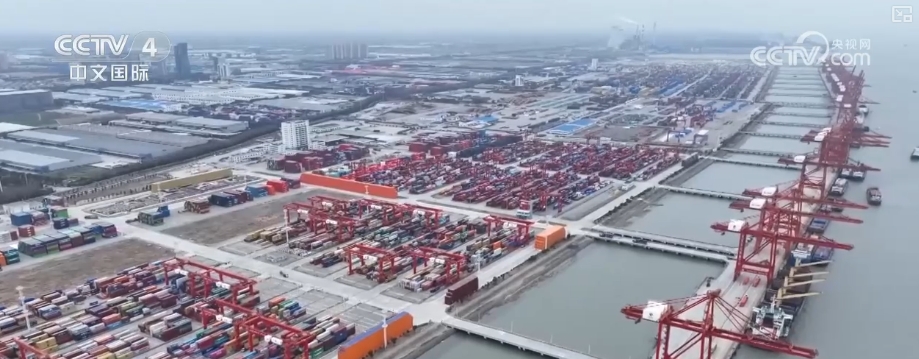China’s Countermeasures Worked, But Foreign Media Discovered Something Was Wrong: The United States’ Tactics Against China Were Used On Itself
China’s Countermeasures Worked, But Foreign Media Discovered Something Was Wrong: The United States’ Tactics Against China Were Used On Itself
Recently, the United States has begun to feel uneasy. Originally, they suppressed Chinese technology companies through "list control" and achieved certain results. But now the tide has turned, and China has also shown its rare earth control card to counter the US strategy. Even foreign media have said that they are familiar with it.
Recently, the United States has begun to feel uneasy. Originally, they suppressed Chinese technology companies through "list control" and achieved certain results. But now the tide has turned, and China has also shown its rare earth control card to counter the US strategy. Even foreign media have said that they are familiar with it. The Financial Times pointed out that China's move is almost a "copy and paste" of the US action.
This is not just a simple counterattack, but a carefully designed countermeasure, allowing the once aloof "suppressors" to taste the taste of being blocked. Americans have discovered that they may not be able to win this game.
The United States has been accustomed to suppressing its opponents on the international stage through "lists" and "blockades" in recent years, especially in the semiconductor field. They have included Chinese companies in the so-called "entity list" on the grounds of "national security". The reasons are vague, and explanations such as "potential threat" or "military use" can cover almost all situations.
However, this blockade is not based on a real threat, but is motivated by political purposes or even a unilateral measure. Executives of American companies have complained that such policies not only failed to attack China, but instead affected the United States' own interests. For example, Qualcomm and Intel's market share in China has shrunk significantly.

This approach by the United States is actually implementing protectionism under the guise of "national security." However, not only China, but also many European, Japanese and Southeast Asian countries are increasingly dissatisfied with this "double standard" behavior of the United States. The World Trade Organization has repeatedly pointed out that U.S. trade measures are inconsistent with rules, but the United States has always turned a deaf ear, refused to implement the ruling, and was even unwilling to abide by basic international game rules.

When this hegemonic behavior loses its legal support, no matter how powerful the United States is, it will be difficult to avoid being embattled on all sides.
When it comes to technology blockade, the United States originally thought that cutting off the export of high-end chips would bring China to a standstill. Unexpectedly, China did not collapse as they expected. Instead, China accelerated its catch-up in "mature process" technology, narrowing the gap with the United States. Huawei's Mate 70 series has been re-released, and the mass production of domestic lithography machines is also accelerating. There are various signs that the US blockade has begun to fail.

In addition, the United States’ own shortcomings in the industrial chain are becoming more and more obvious, especially in rare earths. Although the United States has mineral resources, it lacks refining technology. According to a report from the Geological Survey, about 90% of rare earth raw ores rely on China for refining. It's like a man who has flour but doesn't know how to make bread and ends up having to ask someone else for help.

The United States has outsourced most of its manufacturing industry for decades. Now it wants to "return", but it finds that the cost is too high and even skilled workers are difficult to find. Although Australia was brought in to "replace", even the refining technology of rare earths still depends on China. After a long process, China's control was ultimately unable to be circumvented.

It is precisely because of the hollowing out of U.S. industries in key areas such as rare earths that China has found a breakthrough to counterattack.
In terms of international public opinion, the "unilateral blockade" of the United States is increasingly untenable. The United States always politicizes economic and trade issues and uses "national security" as an excuse if it cannot explain it. However, in comparison, China's rare earth control is more transparent and focuses on preventing military abuse and technology leakage. It does not implement "one size fits all" and does not impose extensive sanctions. This approach is in line with international practice and makes the United States' "security rhetoric" look unconvincing. Many European think tanks also said that China's control measures are reasonable and legal, but instead expose the double standards of the United States in its rules.
China's rare earth control is by no means simply stopping the supply of raw materials, but adopting "technical countermeasures" with clever structural design. First of all, China does not only have raw materials stuck, but also controls the entire industrial chain from mining, smelting to magnet manufacturing. What does it mean? If the United States wants to bypass China to purchase rare earth materials or technologies, it must undergo strict scrutiny.

Especially in magnetic material manufacturing technology, China occupies more than 90% of the global market share, which is a "key node" that the United States cannot bypass. If the United States wants to find a replacement, unfortunately, it's nearly impossible.

What’s even more subtle is that China’s “traceability mechanism” stipulates that as long as a product contains more than 0.1% of Chinese rare earth ingredients, it must apply for an export license even if it is processed through a third country. This directly breaks the illusion that the United States is trying to detour through Australia, Vietnam and other countries for processing. In any case, as long as China's rare earth technology or raw materials are used, the final result still depends on China's face. Foreign media evaluated this move as a "precise chokehold", which is even more detailed than the United States' "Entity List".
This wave of counterattacks by China is not only a tactical counterattack, but also a strategic layout. In the past decade, China has invested heavily in rare earth technology. From green smelting to high-performance magnetic materials, the technical threshold has become higher and higher. According to estimates by the Wall Street Journal, if the United States wants to build a complete rare earth industry chain on its own, it will require at least 10 years and US$5 billion in investment, and it may not be successful.

China not only has technological and production capacity advantages, but also has a leading position in environmental protection standards. This means that China’s countermeasures are not just a one-time blow, but a long-term lever that can continue to work.
The most important thing is that China's countermeasures are more compliant and transparent internationally and meet the requirements of the international non-proliferation system. China has repeatedly stated on international occasions that its control of rare earths is to prevent military proliferation and abuse. This approach is in sharp contrast to the "black box sanctions" of the United States. Therefore, China has established its image as a "responsible power" in the global game and won the understanding and support of more and more neutral countries.

This wave of countermeasures by China caught the United States off guard and caused quite a stir in the global supply chain. The first thing the United States feels "pain" is its military industry. High-end equipment such as the F-35 fighter jet, lidar systems and electric vehicles all rely on high-performance rare earth magnets. Once the supply of rare earths is interrupted, production progress will be hindered and strategic deployment will be slowed down. To make matters worse, alternative resources are either twice as expensive or the technology is immature and unable to fill the gap in the short term.

It is not that the United States has not tried to deal with it. The Biden administration has promoted the "Critical Minerals Independence Plan", and after Trump returns to power, the relevant policies will only become tougher. But the problem is that relying on government funding to promote self-sufficiency in the rare earth industry is by no means a short-term success. Coupled with practical problems such as environmental protection approvals, community resistance, and technological bottlenecks, the United States will eventually find that it wants to decouple, but cannot, and wants to be independent, but cannot stand on its own.
The U.S. political circles have also begun to reflect on the fact that this hegemonic strategy of unilateral suppression may eventually have a negative impact on itself.
China has strengthened its determination to innovate independently through this wave of countermeasures. In addition to rare earths, China's investment in semiconductors, new materials, advanced manufacturing and other fields is accelerating. Government policies are also increasingly inclined to support original technologies, and companies continue to tackle difficulties under the pressure of "stuck neck". For example, rare earth recycling technology and green smelting systems are making continuous breakthroughs. This transformation from "passive response" to "active construction" will become a solid foundation for China's future development.
The global supply chain pattern is also quietly changing. More and more countries are realizing that the entire industrial chain should not be concentrated in one country. The European Union, Japan, India and other countries are promoting the localization of key raw materials, but the progress is slow and the cost is high. China, on the other hand, continues to expand its cooperation circle through mechanisms such as the "One Belt, One Road" and RCEP, transforming "technical control" into "cooperative bargaining" and becoming more confident to participate in the reshaping of global rules.
The biggest revelation that this game has brought to the world is that the rules of the game are not determined by who has the final say, but who plays smarter. The United States relies on suppression, while China plays games by controlling key resources. Judging from this rare earth control, China’s strategic foresight and sophistication are clearly superior.
Through precise and intelligent countermeasures, China not only made the United States taste the bitter fruits of hegemonism, but also demonstrated its control in core areas. In the future, if the United States continues to be obsessed with unilateral suppression, it will only accelerate its own isolation, while China will insist on independent innovation and international cooperation to win more say. This change has also sent an important message to the world: fair competition is far better than a zero-sum game, and the global supply chain needs to be built and shared.
Behind the effectiveness of this counterattack is not only a historical necessity, but also a prelude to future development.





